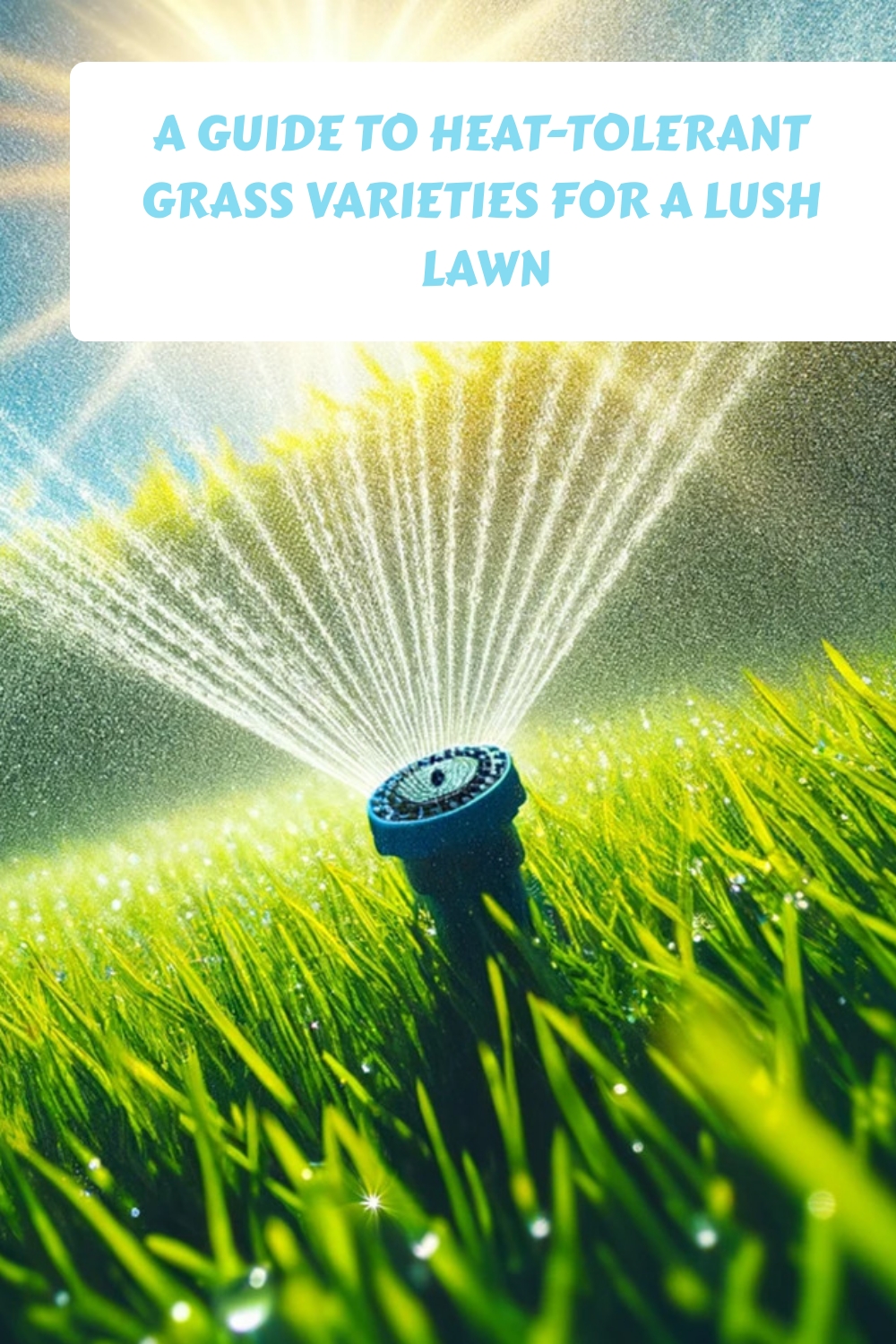Choosing the appropriate grass varieties according to the climate zone is crucial for establishing a thriving lawn. For those who live in the southern states or along the middle belt of the US, heat-tolerant grass varieties are the ideal choice.
These types of grass flourish in locations with warm summers and moderate winters, in temperatures ranging from 80 to 95 °F.
They are resilient, withstanding high temperatures, and grow from late spring to early fall.
Top Heat-Tolerant Grass Varieties
- Bermudagrass
- St. Augustine Grass
- Zoysia Grass
Read on for more details.
Other Important Info
- Soil preparation, seeding vs. sodding, and optimal planting time are key considerations.
- Proper maintenance includes watering, mowing, and fertilizing.
- Choosing the right grass variety for your climate is crucial.
- Proper care and maintenance will help your grass remain lush and green.
Understanding Heat Tolerance in Grass
Warm-season lawn grasses in the United States come from tropical and subtropical regions worldwide. They are exceptionally well-suited to thrive in elevated soil and air temperatures, remaining lush and actively growing even in hot weather.
While warm-season grasses generally require more sunlight than cool-season grasses, various species within this category show diverse tolerances for shade or low-light conditions.
As a group, they perform optimally when exposed to full sun, which means six to eight hours or more of direct sunlight daily. Sunlight is a crucial catalyst for promoting vibrant color and the overall health of the lawn.
Many, but not all, are drought tolerant, another aspect contributing to their resilience. The presence of deep and extensive roots plays a pivotal role in enabling them to withstand drought more effectively than some other grass varieties. Water requirements will vary depending on soil type and environmental conditions.
Popular Heat-Tolerant Grass Varieties
Here are some of the most popular warm-season grasses that cannot only survive but thrive in the heat:
Bermudagrass
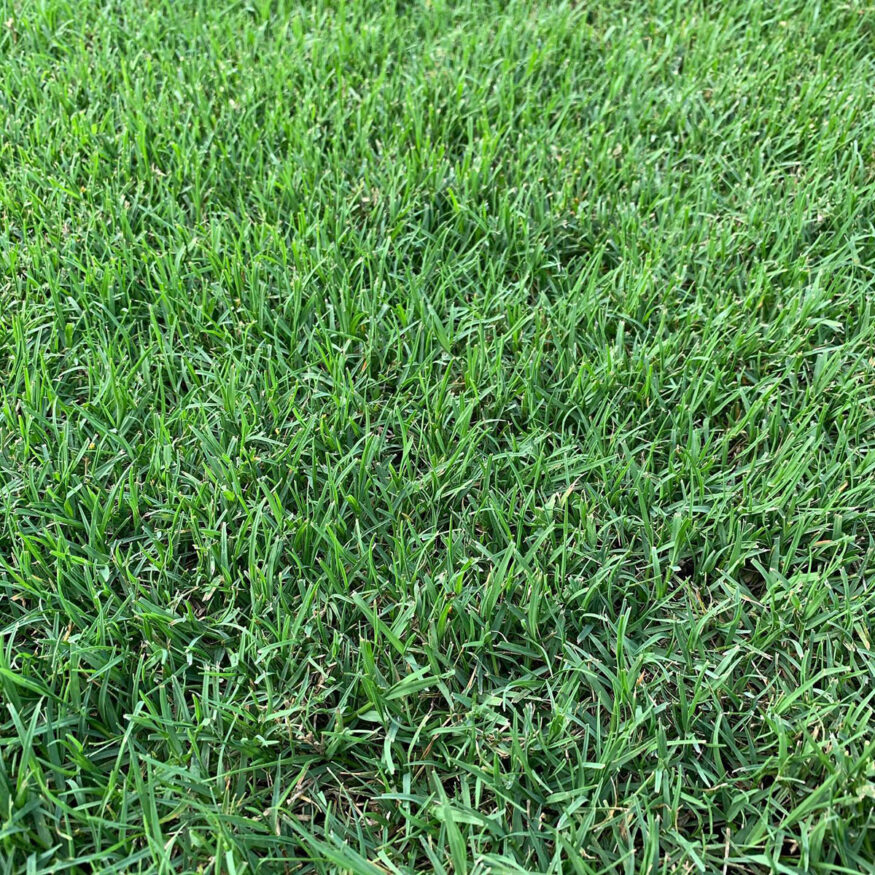 Source: sunny.bermuda on Instagram
Source: sunny.bermuda on InstagramBermudagrass is one of the most popular grass types. It is tolerant to heat and drought and thrives in full sun with proper drainage. After a period of dry weather, it responds promptly to watering. During the growth phase, it requires frequent mowing. Bermudagrass can also hold up to high levels of foot traffic but is less tolerant of shaded conditions.
Common Bermuda, Celebration Bermuda, hardy Tiftuf Bermuda grass, and Tifway 419 are among the most robust varieties of this grass species, exhibiting exceptional resilience to both drought and heat.
St. Augustine Grass
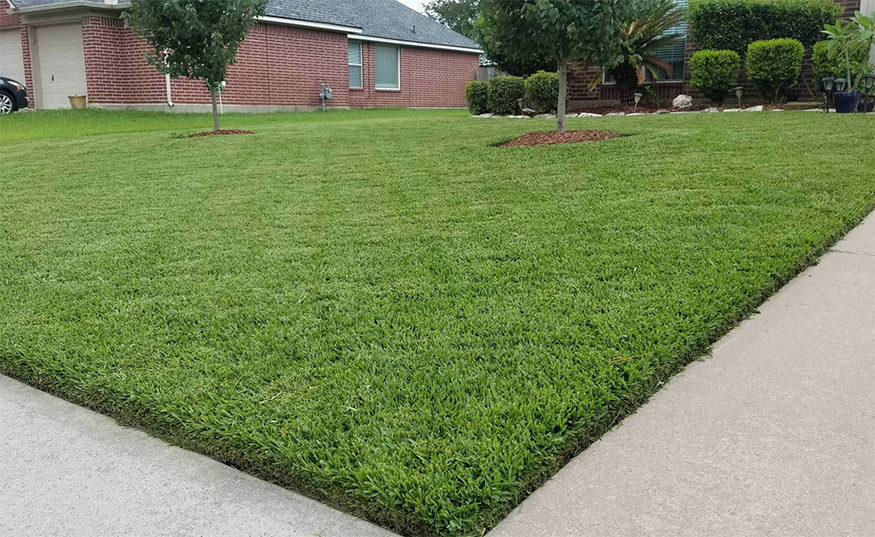
St. Augustine Grass can withstand heat and remains lush and green throughout the year, including winter. This coarse-leaf grass is the most popular variety in Florida. It thrives in dappled shade, handles moderate foot traffic, and retains its green hue during winter dormancy with minimal water requirements.
Overwatering during winter can make this species susceptible to diseases, so it is recommended to refrain from watering St. Augustine grass while it is dormant.
Among the cultivated varieties of this species, Floratam stands out as the most drought- and heat-tolerant.
Zoysia Grass
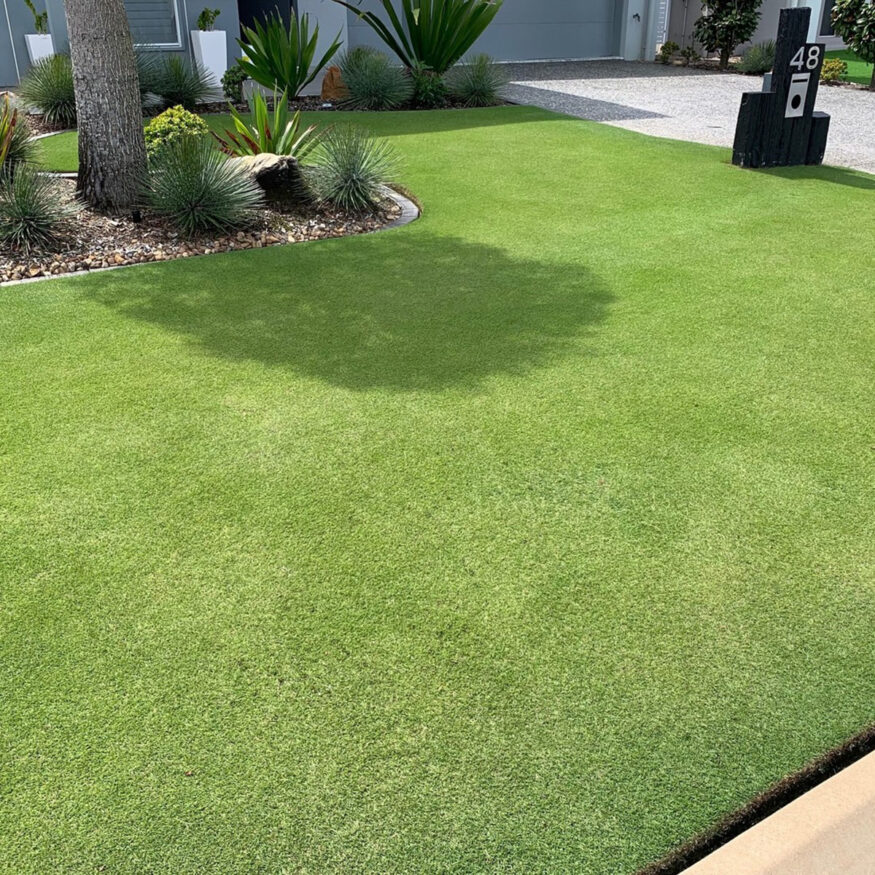 Source: lawnsolutions on Instagram
Source: lawnsolutions on InstagramOnce fully established, this grass, known for its slow growth, creates a vibrant and dense turf carpet.
Zoysia thrives in various soil types and is tolerant to salt, wear, and drought. It doesn’t require much effort to keep it looking great. Zoysia does well in heat and can be mowed or watered infrequently, resulting in minimal maintenance time and costs. It adapts well to sunny and shaded areas and effectively withstands foot traffic.
El Toro, Zeon Zoysia, and Palisades’ varieties of this species are the most recognized.
Installation Tips for Heat-Tolerant Grass
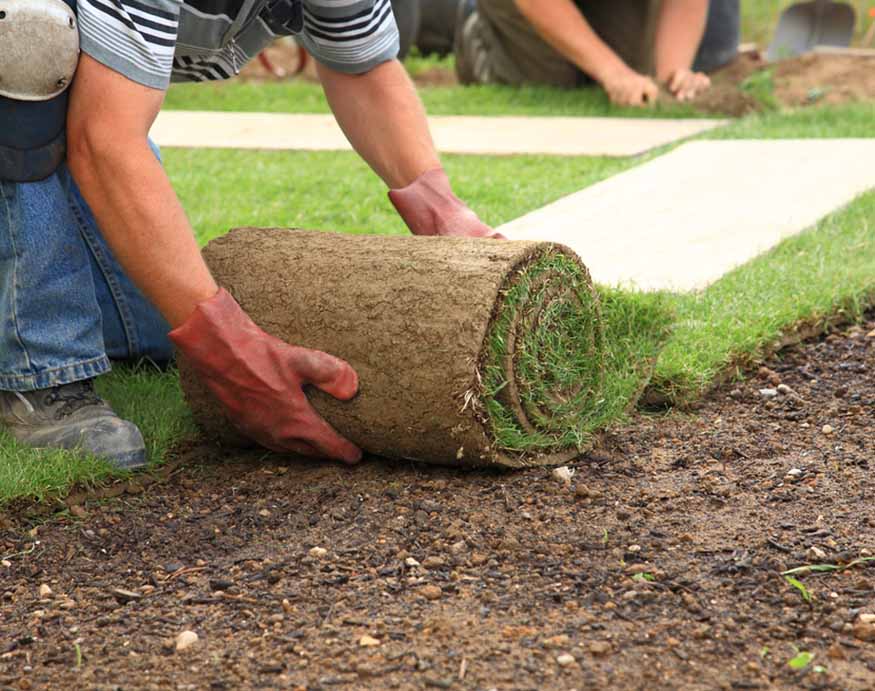
Among the best practices for soil preparation in establishing a lawn is to do a soil test. It measures soil pH, macronutrients, and micronutrients, providing valuable insights and determining if you need to adjust nutrient levels.
Seeding vs. Sodding a Lawn
While most warm-season grasses are available in seed form, there is also an option to lay sod.
Comparing these two options, seeding a lawn is generally more economical than purchasing sod.
On the other hand, as sod is more expensive than seed, for many individuals, the investment in sod is justified by the appeal of having an “instant lawn.” It takes approximately two to four weeks for sod roots to establish, after which the initial mowing of the new lawn can start.
The Best Time to Plant Warm-season Grass
Since this practice aligns with their upward growth phase, late spring and early summer are considered the optimal periods for planting warm-season grass.
This time of the year is the best choice for laying sod, too, although you can do it at any season with proper preparation and watering.
Maintenance Strategies for Heat-Tolerant Lawns
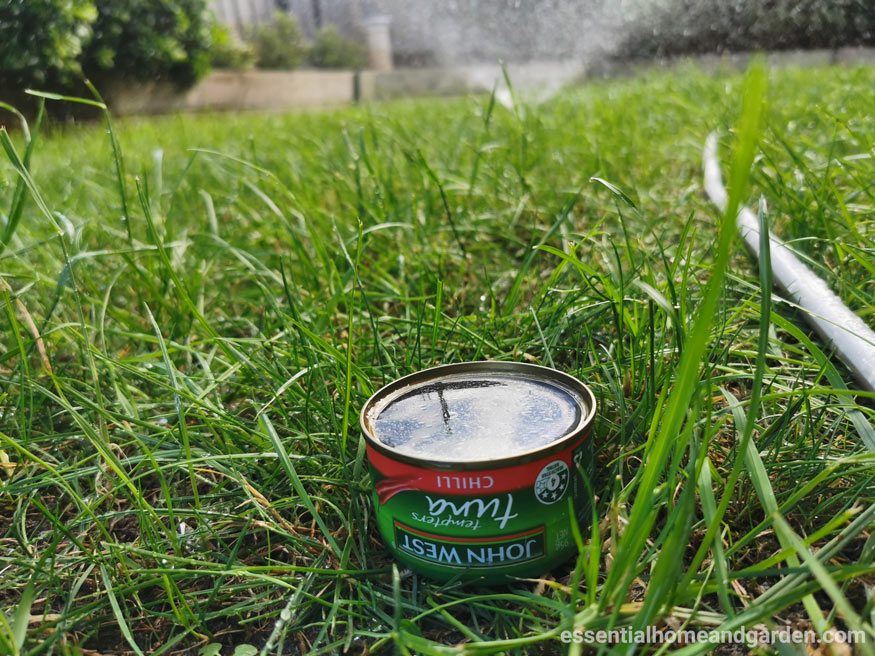
Heat-tolerant grasses are at their greenest during the summer, while they turn brown in the late fall and winter. We know this period as the “dormant period.” Warm-season grasses need proper care to thrive and endure the challenging transitions between seasons.
Watering
During the intense summer heat, it is essential to ensure the lawn receives a weekly watering of one inch to preserve the lush greenness of the grass. You should avoid over-watering and watering at night to prevent excessive moisture, which could promote disease. A rule is to do early morning watering, preferably at or just before sunrise.
One inch of water per week is recommended to maintain growth throughout the winter and during the spring to sustain moisture and ensure the grass’s vitality. Watering a lawn deeply rather than using tiny sprinkles is strongly advised.
Mowing
Maintaining a healthy lawn depends on proper mowing practices. If you do mowing excessively or too low, it can impede grass growth. It would be best to trim no more than one-third of the grass blade in a single mow to avoid excessive stress of grass.
Choosing an appropriate mowing height depending on the grass variety and using a sharp mower blade are crucial to minimize stress on the grass blade. Sharp blades also help to prevent fungus damage and spread.
Mowing the grass tall during the summer helps reduce weeds, as it limits sunlight reaching them. In contrast to the other seasons, there is no need for frequent mowing during the winter, just a recommendation to keep the height slightly taller than usual.
Fertilizing
Apply fertilizer to warm-season grasses from late spring through early fall during their active growth period. The dormancy period is not the time for fertilizing grass.
Conducting a soil test can provide recommendations on the specific fertilizer needs of particular lawns. However, the amount of fertilizer to apply depends on the grass type, and recommendations may vary slightly by state.
When applying fertilizer, follow the suggested rate on the fertilizer bag for the specific soil type.
Pests, diseases, and weeds are additional challenges for maintaining heat-tolerant grass lawns. They include grubs, chinch bugs, fungal diseases, and mole crickets, so you must plan proper identification, timing, and appropriate treatment options.
Ensure Your Heat-Tolerant Grass Thrives
Achieving and maintaining a healthy, beautiful lawn demands time and dedication, but the initial first step is the selection of the appropriate grass for specific climates. In the southern half of the United States, prevalent grasses can withstand high temperatures, and all those who want to have a healthy lawn in this region must choose the grass that not only endures the heat but thrives in it.
You can achieve proper results by planting a suitable grass variety for a specific climate and caring about it properly. Previous insights and tips can help select suitable varieties, ensuring the grass remains lush and green.
